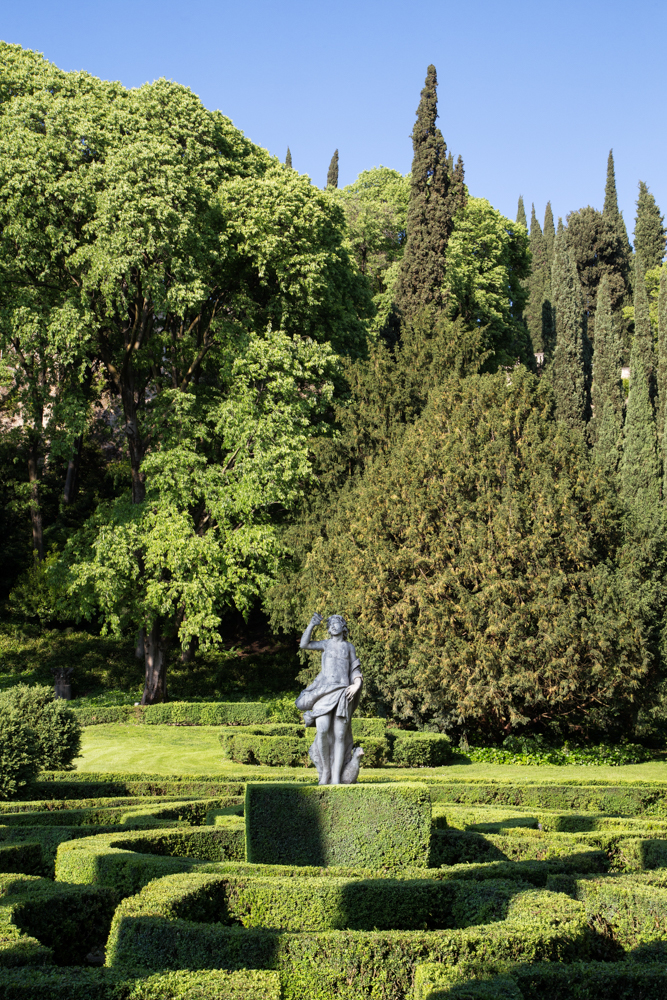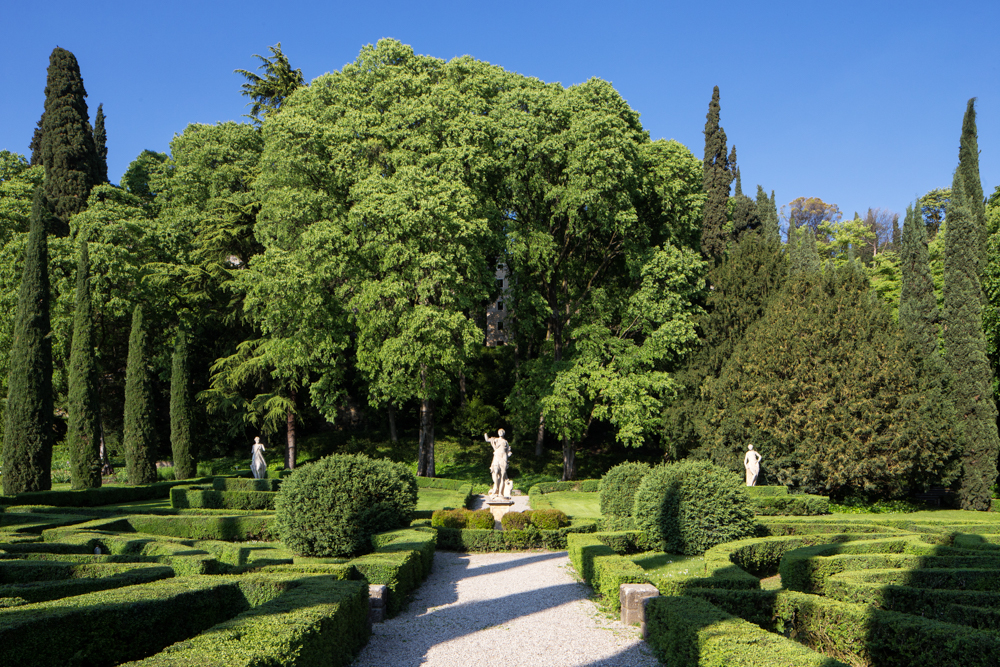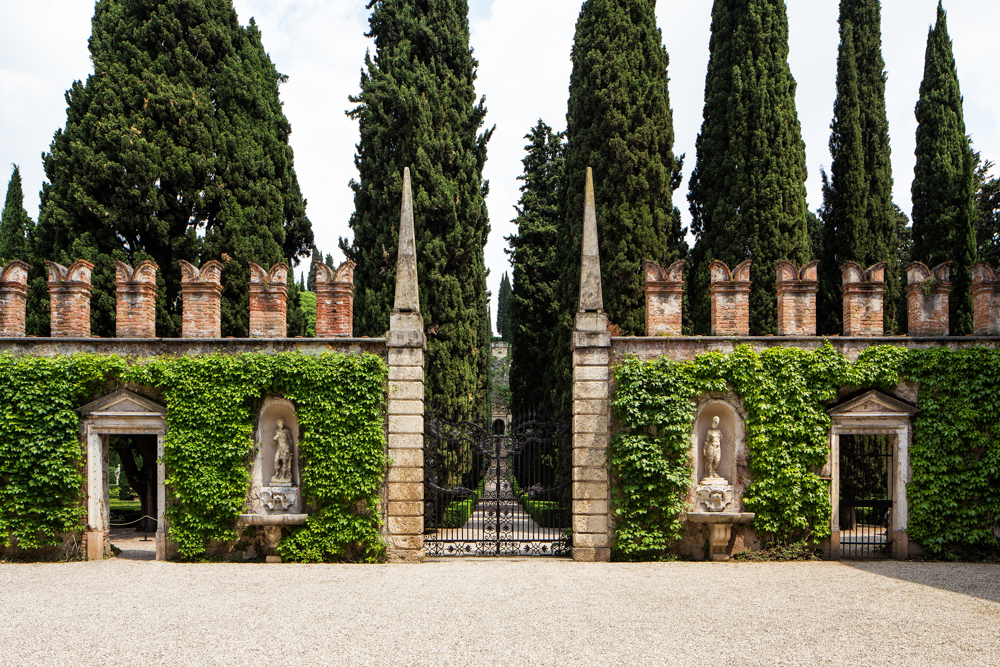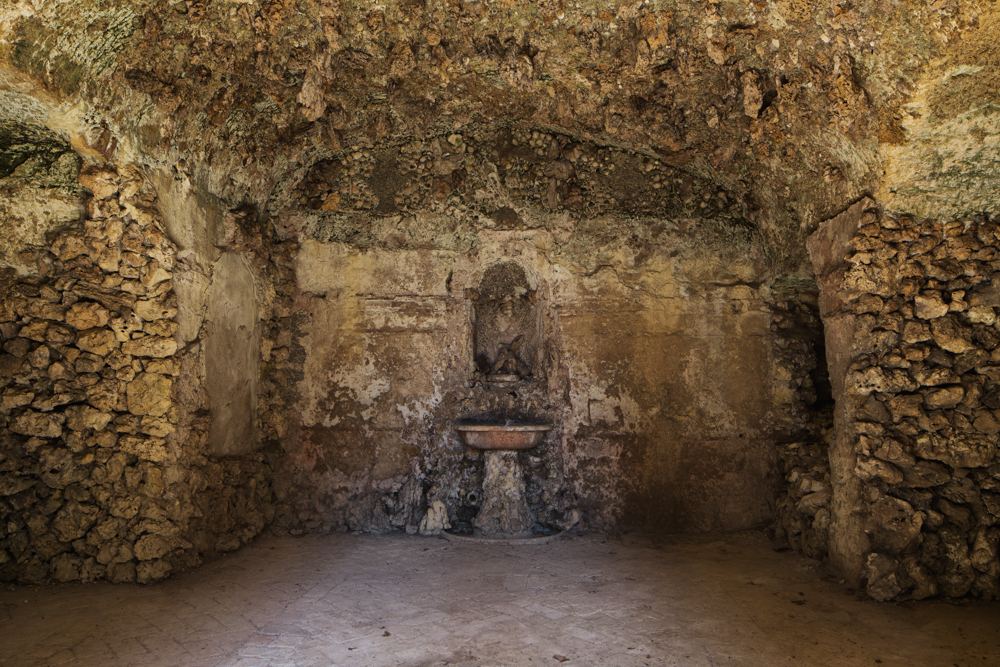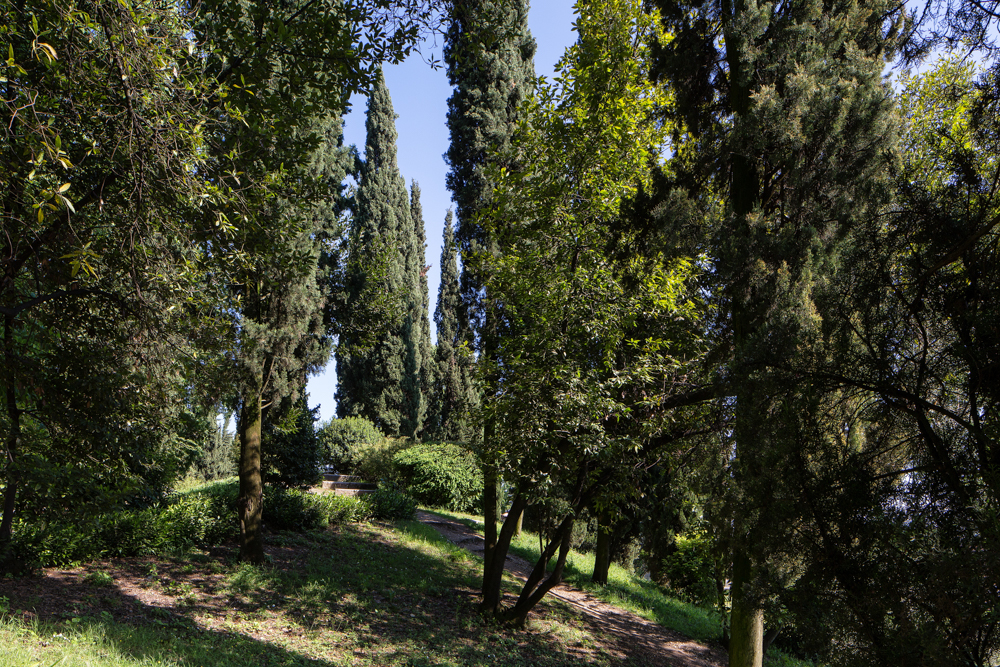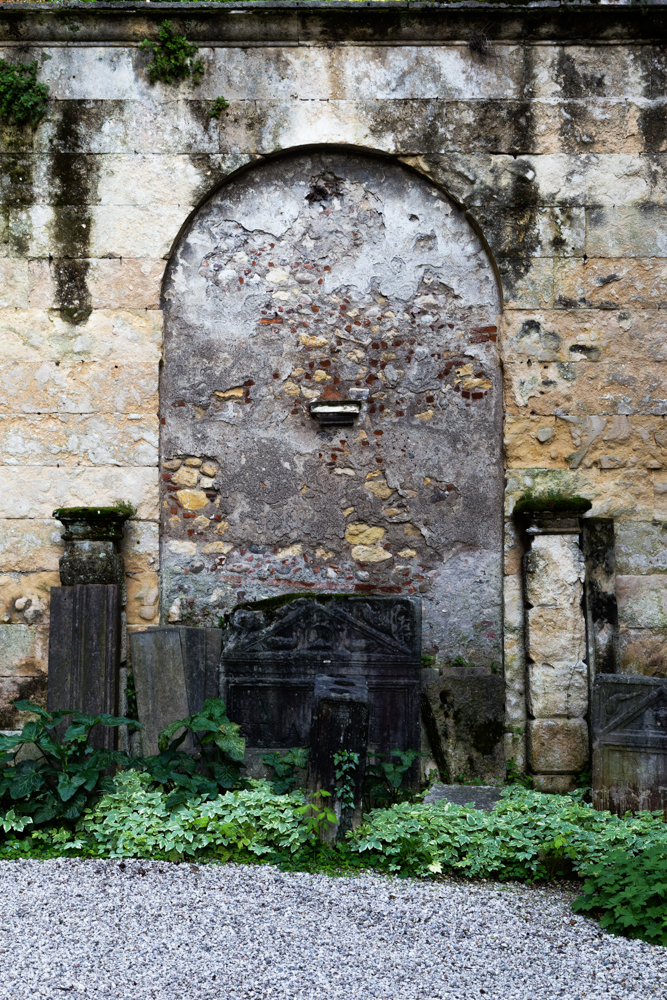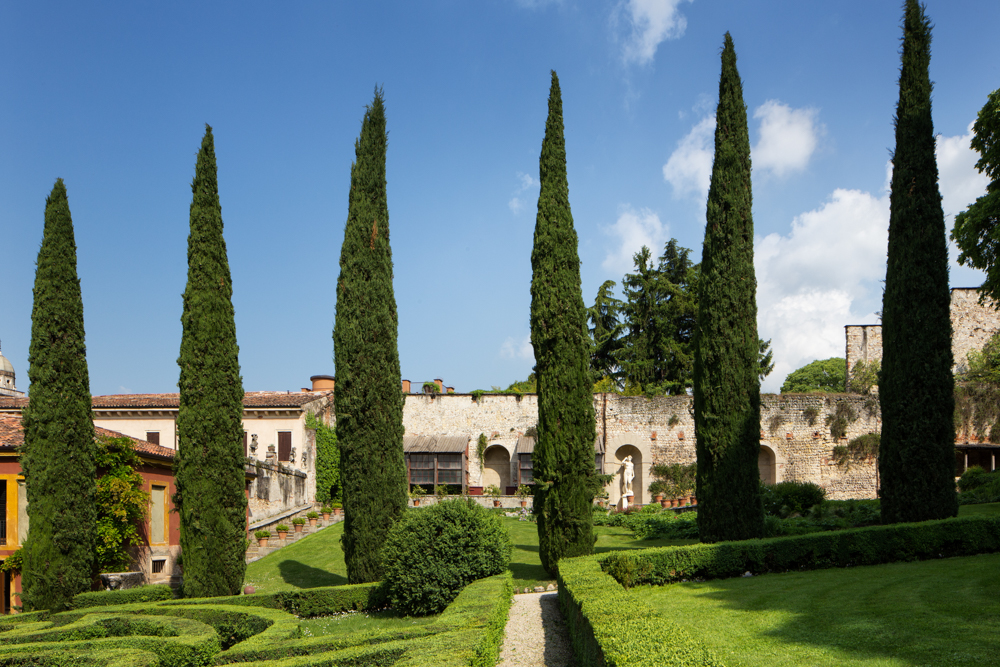Giardino Giusti
Nature, art and history
Giardino Giusti
At the end of the thirteenth century wool-dyeing was Verona’s main source of wealth, and it was in order to further their interests in this industry that the Giusti family moved to Verona from their home in Tuscany. In 1406 Provolo Giusti purchased a piece of land next to the ancient Postumian Way, the main east-west thoroughfare across the Po valley, and for the next two centuries this patch of ground bordered by the old city wall – the site of the present garden – was used to boil the enormous cauldrons of dye in which wool was soaked before being laid out to dry.
The factory buildings were replaced during the course of the sixteenth century by an elegant palazzo in the style of Michele Sanmicheli. Behind it, a formal garden was laid out according to the fashion of the age, with low hedges, cypress trees, fountains and grottoes. The driving force behind these transformations was Agostino Giusti (1548-1615), an erudite man with a passionate interest in music and painting. A Knight of the Venetian Republic, he also had many contacts among Europe’s ruling families, the Medici and Habsburgs among them.
The new palazzo was created by bringing all the various buildings used for wool working under one roof, thus forming two separate wings that shared a single long facade towards the street and a large reception hall on the first floor for entertaining important visitors. The entrance leads into a porticoed area that gives onto the main courtyard. Beyond the gate on the opposite wall may be glimpsed a long avenue of cypress trees terminating at a grotto, above which looms a huge grotesque mask sculpted out of the rock face. The Giusti Garden had many elements in common with the Gardens of The Medici, which provided a sort of aesthetic reference point for the educated elites of the period.
A Renaissance garden
With the growth in popularity of the “GRAND TOUR” Giardino Giusti became an obligatory stopping off point for travellers visiting Verona, including poets, artists, and crowned heads of Europe. Among its distinguished visitors were Cosimo III de Medici, Charles de Brosses, Mozart, Goethe, Thomas Addison, John Evelyn, Ruskin, Emperor Joseph II, King Carlo Felice of Savoy and Tsar Alexander I of Russia. The garden, which is currently under restoration, is maintained “all’antica”, with the aim of preserving the restrained tone of the gardens of the past: emphasis is given to such elements as architectural features, references to mythology and links with the classical world, while there are few flowers, shrubs and exotic species. Visitors can still see many items that were in vogue in sixteenth-century gardens: pots with citrus plants, statues of mythological figures, fountains, lemon houses, grottoes, grotesque masks, Roman remains and pavilions in which to rest and enjoy the panoramic views.
The lower garden is divided according to the giardino all’italiana style, into nine square sections, each symmetrical green room formed of box hedges and dominated by statues of Diana, Venus, Atalanta, Apollo and Adonis. The garden’s main axis is formed of the cypress alley leading to the grotto and the mask, with the labyrinth on the right, while on the left is a French-style parterre, the citrus garden and the so-called vaseria where plants in their pots are overwintered.
This part of the garden, with its rigidly geometric design and straight lines speaks to us of man’s intervention, of order and symmetry. In contrast, the wooded part of the garden is deliberately conceived in order to astonish the visitor as he climbs its steep and shady paths. The rocky precipice, the grotto, the play of light and shade and perspectives are all created artificially to elicit feelings of admiration, awe and wonder in the viewer. A secret staircase concealed in the little turret dug into the rock face leads up to the highest point of the garden. From the belvedere atop the grotesque mask it is possible to enjoy one of the finest views of the city of Verona.

Famous Visitors

ALESSANDRO I
The Tsar of Russia visited the garden in private.

COSIMO III DE MEDICI
The penultimate Grand Duke of Tuscany

JOSEPH II
Holy Roman emperor.

WOLFGANG AMADEUS MOZART
He visited the Garden on his journey to Italy in 1769

CHARLES DE BROSSES
Count of Tournay, magistrate, philosopher, French linguist and politician.

JOHANN WOLFGANG VON GOETHE
In his Italian Journey, he wrote at length about a cypress tree in the garden which is still alive today.

THOMAS ADDISON
English physician, one of the “great men” of Guy’s Hospital in London.
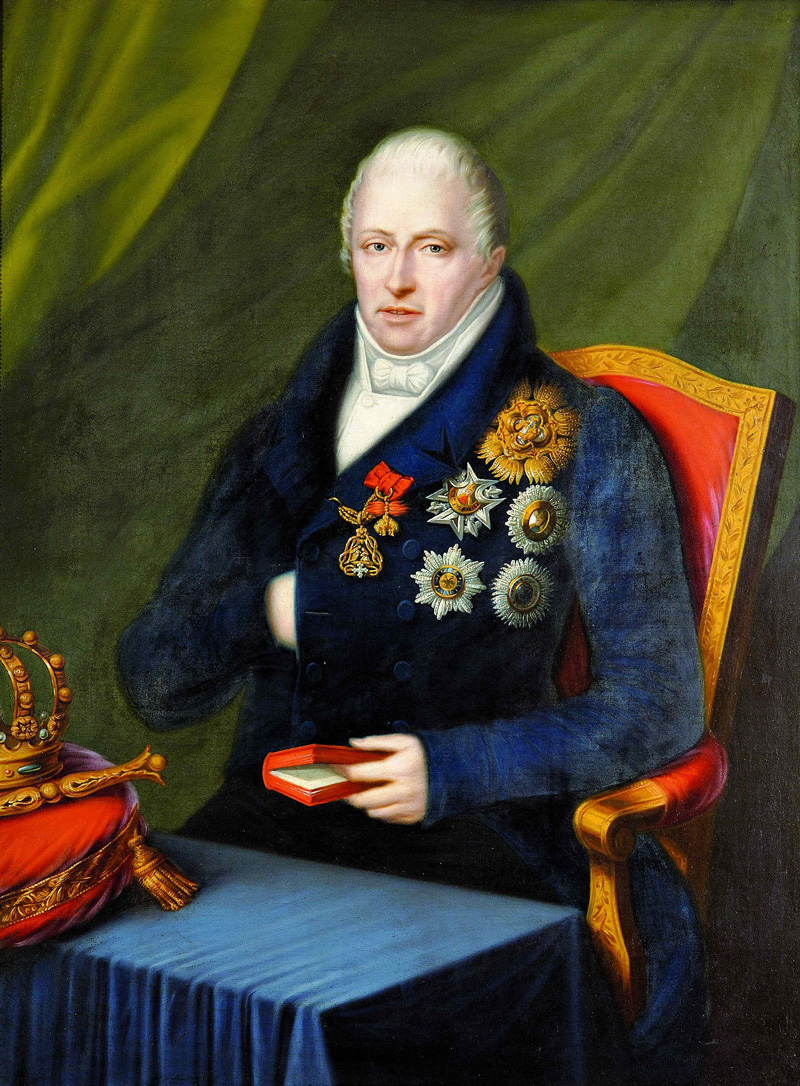
CARLO FELICE DI SAVOIA
King of Sardinia and Duke of Savoy
